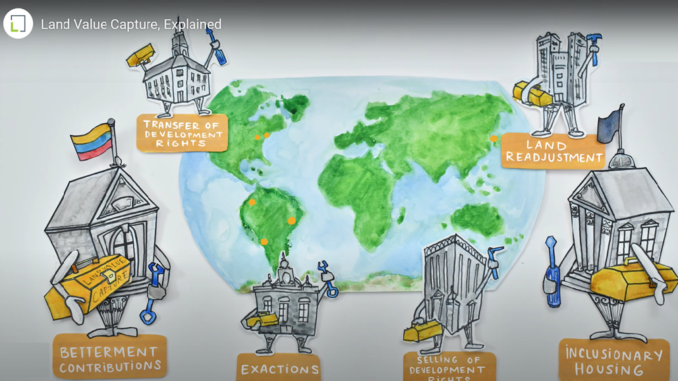
What is “land value capture”? How does it work? And why have so many communities across the world applied this financial approach?
Land value return is based on a simple core premise: public action should generate public benefit. As challenges mount from rapid urbanization, deteriorating infrastructure, climate change, and more, this funding source has never been more important to the future of municipalities.
The video below explains land value capture and provides examples from within the “toolbox” of instruments available to governments. It shows how communities have used land value capture to promote social equity and finance affordable housing, infrastructure, and other public goods.
In an era of tight budgets and exploding need, cities around the world are funding infrastructure
and other public improvements through land value return, also known as land value capture. This
policy approach offers an array of public finance tools that enable communities to recover and
reinvest land value increases resulting from public investment and other government actions.
Notably, as new subway lines, roads, and other public works raise the value of nearby land and
real estate, developers and property owners share that publicly generated windfall to help local
governments pay for new bridges, transit, parks, affordable housing, and other infrastructure
upgrades.
When used in conjunction with good governance and urban planning principles, land value return
can be an integral tool to help governments advance positive fiscal, social, and environmental
outcomes. On every continent, communities are already improving quality of life for their residents
through such instruments, which include: betterment contributions, charges for building rights, inclusionary housing and zoning, linkage or impact fees, special assessments, transferable development rights, and even certain applications of the property tax.
For more detailed information, see the Lincoln Land Institute’s Policy Brief Land Value Return: Tools to Finance Our Urban Future.



